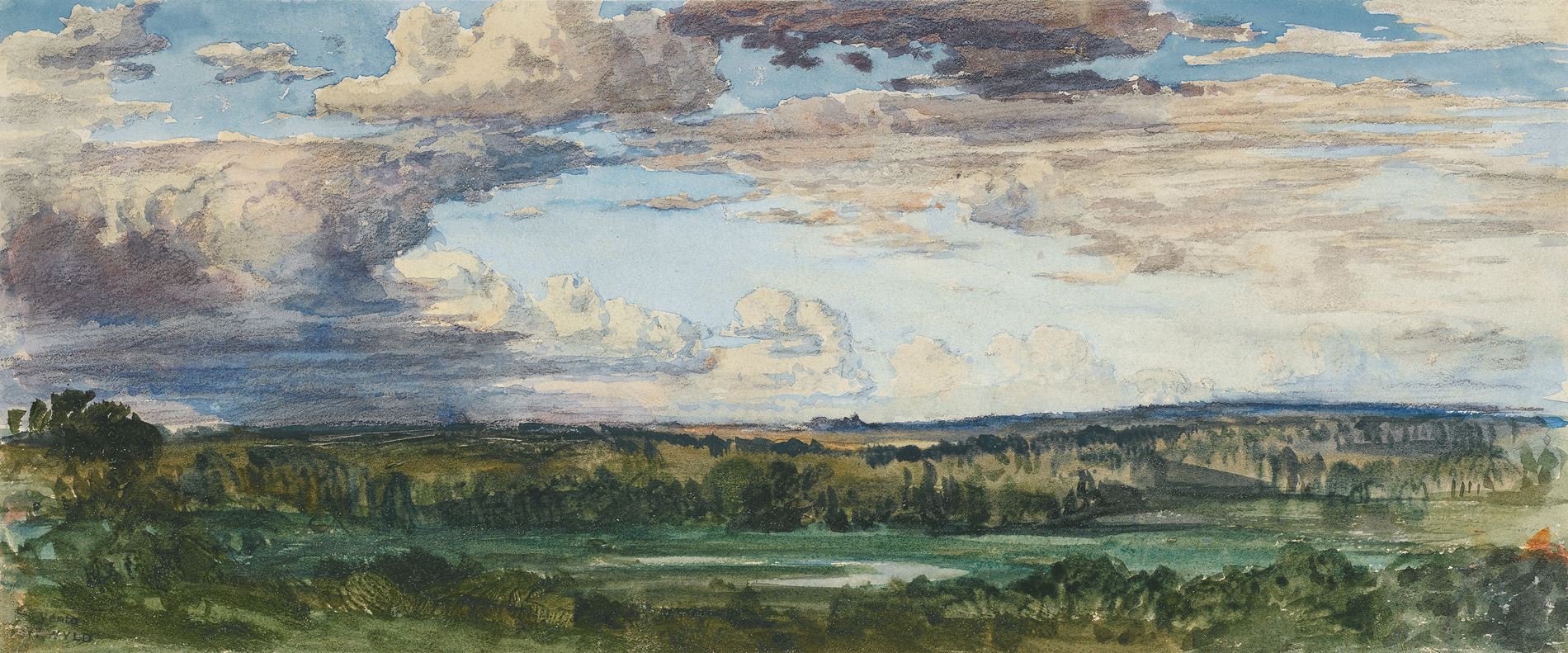William WYLD
(London 1806 - Paris 1889)
Wooded Landscape
Sold
Pencil and watercolour, heightened with gum arabic.
149 x 358 mm. (5 7/8 x 14 1/8 in.)
149 x 358 mm. (5 7/8 x 14 1/8 in.)
Born in England but raised largely in France, William Wyld came late to his vocation as an artist, having worked in Calais as first secretary to the British consul and later owning a wine business in Epernay. It was in Calais that he met the watercolourists François Louis Francia and Richard Parkes Bonington, who were both to have a profound influence on his work. He also met the Anglo-French collector John Lewis Brown and became a close friend and later travelling companion of the painter Horace Vernet. Having made his debut at the Salon in 1831, Wyld travelled to Algiers in 1833, spending some six months there and occasionally working alongside Vernet, whom he later accompanied to Italy. Wyld’s drawings and sketches from his trip to North Africa resulted in an illustrated publication entitled Voyage pittoresque dans le régence d’Alger pendant l’année 1833, published in 1835 with lithographs by Wyld and Emile Lessore. By 1834 Wyld had decided to abandon the wine trade in favour of working full time as an artist.
Although he occasionally painted in oils, Wyld’s reputation was established as a watercolourist. By the 1850’s he had developed a market for elaborate and highly finished watercolour views of European cities, based on his extensive travels in Germany, Austria, Holland, Belgium, Spain and Italy, as well as England, Scotland and France. While he worked mainly in France and exhibited in the French section at the Paris Salons, Wyld always retained his British nationality. He exhibited regularly in London at the Royal Academy, the British Institution and the New Water-Colour Society - where he showed some two hundred works between 1849 and 1882 - and in 1879 he was elected a member of the Royal Institute of Painters in Watercolour. Many of Wyld’s British patrons were wealthy Northern industrialists, and he also gained a measure of Royal patronage from Queen Victoria, who commissioned a series of views of the landscape around Balmoral Castle in 1852. He remained active until his death in Paris in 1889.
In one of the few contemporary references to Wyld, a long article published in 1877, the critic P. G. Hamerton noted of the artist that, ‘Few painters in the present century have enjoyed more of what constitutes success, much labour in a beloved occupation sustained by excellent health, public recognition in several different nations, and also that pecuniary success which an artist values as much for the appreciation which it implies as for its convenience…His art belongs, as may be expected, more to the first than the second half of the nineteenth century, both in its temper and its tendencies. It is not so intime or affectionate as recent landscape-painting, but excels it both in the evidence of learning and in the exercise of taste.’
More recently, another scholar has opined that ‘William Wyld is arguably Bonington’s most interesting successor, not in the sense that he slavishly imitates the other man’s work but in the sense that he acquired from a study of Bonington’s work a sharpness of eye, a dexterity of handling and an individual sense of location which he exploited to the full in the markets of England and France.’
Provenance
The artist’s studio, Paris
The posthumous vente Wyld, Paris, Hôtel Drouot, 30-31 May 1890, with the sale stamp (Lugt 2587b) at the lower left.




